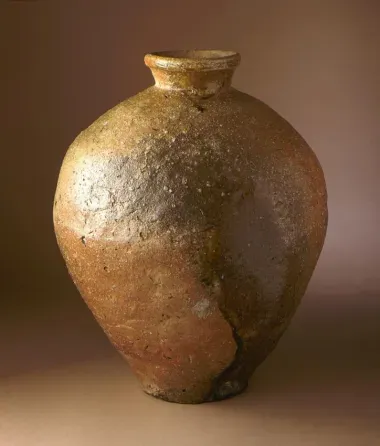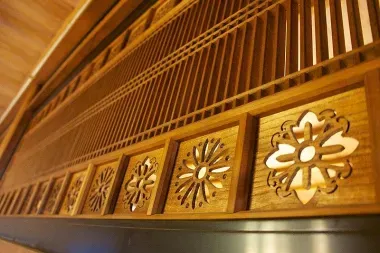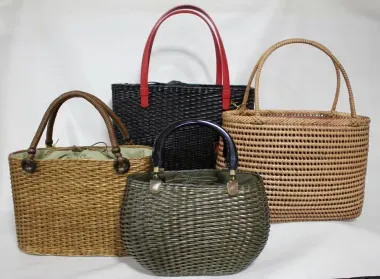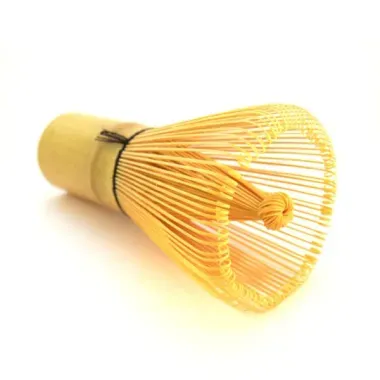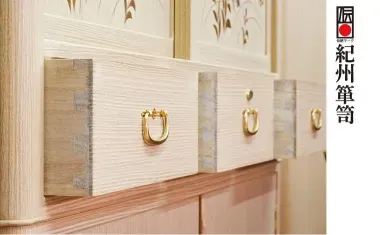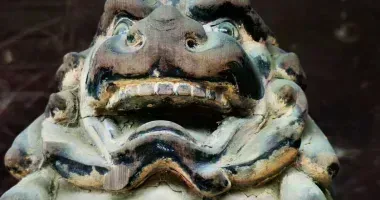Kansai's traditional crafts 関西の工芸品





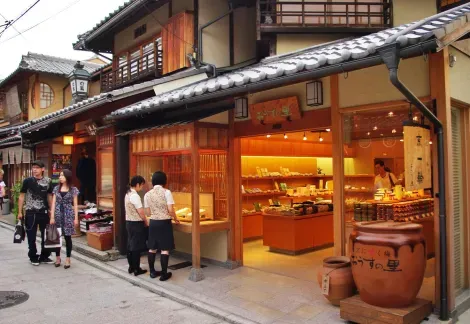
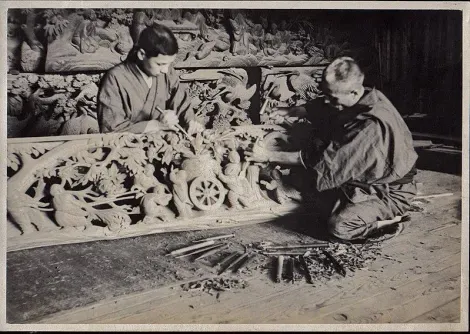
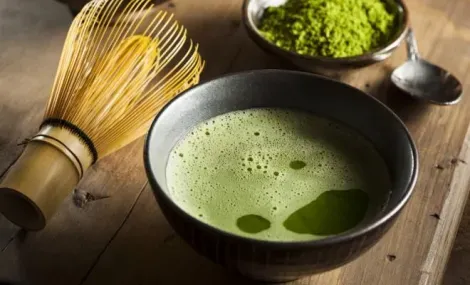
Exceptional workmanship: discovering the craftsmen of Kansai
Japan Experience showcases Kansai craftsmanship through a selection of 6 protected traditional craft industries. Discover the craftsmanship and exceptional work of this region which was at the heart of political and cultural life for more than 1,000 years.
Protected traditional cottage industries
Since the promulgation of the law on the promotion of traditional crafts of 1974, a certification of authenticity is reserved for products made manually using traditional techniques and tools in the archipelago. These traditional crafts are defined according to five strict principles: articles mainly used in daily life, a manufacturing process carried out by hand, manufacturing according to traditional techniques, traditionally raw materials, and a determined production area. As such, there are today 237 traditional crafts designated by the Minister of Economy, Trade, and Industry at the national level.
- Read also: Traditional crafts in the Tohoku region
The Kansai region, which concentrates 37 different ones including 17 for the Kyoto prefecture alone, is on the 2nd step of the podium of the regions grouping the most traditional crafts on its lands, slightly ahead of the Kanto region. Due to its rich past and the presence of three former imperial capitals, Kansai has all types of crafts: textiles (weaving, dyeing, embroidery, other fiber crafts), ceramics, lacquer, bamboo and woodwork, metal, Buddhist altars and accessories, washi paper, writing tools, and abacus, stone carving, traditional dolls. It is impossible here to draw up an exhaustive inventory without getting lost in the maze of a daunting and ineffective list.
It is therefore a selection of craft techniques whose reputation more or less exceeds the borders of the archipelago that we present to you here at the rate of one craft per prefecture. There is not a minute to lose; discover now the exceptional crafts of Kansai!
Shiga Prefecture
Shigaraki-yaki (信楽焼)
A type of ceramic made since the Tenpyo era (729-749) in Shigaraki, a city recognized as a Nihon Rokkoyo, one of the six most important traditional ceramic production centers in Japan. Particularly resistant thanks to the sandy clay of Lake Biwa from which it is made, it has rather warm tones (orange to red).
Nowadays, a wide variety of everyday objects are made using this technique: teapots, tiles, vases, tableware, and also ornaments.
- Shigaraki Pottery Industry Cooperative
- Address: 985 Shigarakicho Eda, Koka, Shiga 529-1811
- Phone. : 0748-82-0831
Kyoto Prefecture
Kyo-kanoko shibori (京鹿の子絞)
Kyo-kanoko shibori is a technique of tie-dyeing fabrics developed in Kyoto in which certain parts of the fabric are tied with thread and then immersed in a dye bath to create patterns.
The latter, defined by the position of the knots and their tightness, recall the spotted coat of the fawn; the related parts remaining white. A similarity is reflected in the very name of the technique since "kanoko shibori" literally means "the tightening of the deer".
Among the fifty or so methods of shibori (tie-dyeing), Kyo-kanoko shibori has been considered since the Edo period (1603-1868) to be the most elegant.
- Kyo-kanoko shibori promotion cooperative
- Address: Kyozomekai 5F, 481 Toroyamacho, Nakagyo Ward, Kyoto, 604-8225
- Phone. : 075-255-0469
- More information on the association's website
Osaka Prefecture
Osaka-ranma (大阪欄間)
In traditional Japanese houses, ranma are wooden carved panels fixed between the ceilings of two rooms and placed above the fusuma (sliding opaque panels). This domestic cedar or cypress decorative elements, however, have a sacred origin.
They indeed appeared at the beginning of the 17th century in temples and shrines in the regions of Kyoto and Osaka, notably at the Hijiri shrine built in 1604 in the city of Izumi and at the Shitennoji temple rebuilt at the beginning of the 17th century. During the 18th century, the ranma entered the private sphere by becoming an essential architectural element in the homes of wealthy Osaka merchants, both for its practical qualities (room ventilation and lighting) and for its decorative aspect.
This popularization with the merchant class of Osaka made the city the main center of production from the middle of the Edo period (1603-1868). Not to mention that the city could rely on the presence of many wood wholesalers. The craftsmen of Osaka then perfected the technique originating in Kyoto; raising it to its highest level of quality and requirement.
The most frequently performed types of Osaka-ranma are chokoku-ranma and sukashibori-ranma; the first being a carved panel reproducing a three-dimensional decoration and the second presenting scrolled motifs.
- Osaka-ranma Handicraft Cooperative
- Address: 1-4-26 Torikai Honcho, Settsu-shi, Osaka, 566-0052
- Phone. : 072-646-8470
Hyogo Prefecture
Toyooka-kiryu-zaiku (豊岡杞柳細工)
The city of Toyooka, located in the north of Hyogo prefecture, can boast of being the Japanese capital of bags! It was here, during the Azuchi Momoyama period (1573-1603), that willow and rattan basketry called Kiryu-zaiku developed into a true craft industry-recognized throughout the archipelago.
This type of basketry was however already practiced in Japan for 2000 years as evidenced by the Tajima no Kunisan Yanagibako, a woven willow box dating from the 1st century which is among the treasures kept at the Shōsō-in, the treasure house of the Tōdai- ji in Nara.
But in the 17th century, the kiryu -zaiku received its letters of nobility in Toyooka thanks to the work of promotion and protectorate in its favor carried out by the Kyogoku family who then ran the domain. The clan was so active that it managed to make the city the exclusive production center for this craft. In addition, local craftsmen could count on an abundant raw material; salix koriyanagi willow blooming perfectly on the banks of the Maruyama River.
Even today, baskets, bags, baskets, suitcases, and boxes are produced in Toyooka using the original techniques, namely six different types of basic weaving, 33 types of interlayer weaving, and 18 different finishes.
- Hyogo Prefectural Cooperative
- Address: 1362 Akaishi, Toyooka City, Hyogo 668-0801
- Phone: 0796-23-3821
Nara Prefecture
Takayama chasen (高山茶筌)
Long hours of meticulous cutting off a piece of bamboo into a hundred pieces for barely a few seconds of use… This is the striking contrast offered by this craft from the prefecture of Nara: the Takayama chasen. Composed of 60 to 240 fine pieces of bamboo cut according to the models, the Takayama chasen is a small whisk used in the tea ceremony to mix the water with the powdered tea in a uniform way. The youngest son of the lord of the town of Takayama in the city of Ikomi is said to have imagined and created the chasen at the request of the founder of the chanoyu himself, Murata Juko (1423-1502).
The artisans of Takayama who manufacture 90% of the archipelago's chasen can produce 120 different types of whisks to meet the requirements of tea schools and the specificities of each type of tea.
Be aware that Takayama chasen is often only used once! The chasen that have become unusable is then burned in Buddhist temples during an annual ceremony called chasen koyo. A 500-year-old tradition!
- Takayama Chasen Production Cooperative of Nara Prefecture
- Address: 6421 Takayamacho, Ikoma City, Nara 630-0101
- Phone. : 0743-71-3808
- More information on the association's website
Wakayama Prefecture
Kishu Tansu (紀州簞笥)
Wakayama City is the center of the production of sophisticated furniture, renowned for its durability and ornamentation: Kishu tansu. These storage units (chests, cupboards, and cupboards) are made of paulownia wood, a tree native to China and Korea with pale yellow tint.
The existence of this traditional carpentry technique is attested from the years 1830-1840; the date when the Kishu tansu was then used as a dowry for the bride.
For further proof of the high quality of the Kishu Tansu, it would be the use of this furniture in the refurnishing of Wakayama Castle in 1850 following the fire of 1846 in which most of the furniture had disappeared, unfortunately.
- Kishu-tansu Production Cooperative of Wakayama Prefecture
- Address: 23-23 Nanchicho, Wakayama, Wakayama 640-8511
- Phone: 073-435-1233
- More information on the association's website
